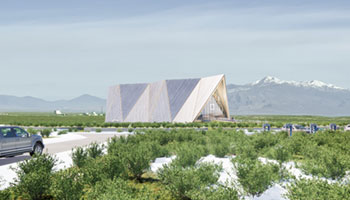
Breaking News
 Jimmy Dore Compares Trump's Endorsement of Overthrowing Libya to His Actions in Venezuela
Jimmy Dore Compares Trump's Endorsement of Overthrowing Libya to His Actions in Venezuela
 Pfizer mRNA Found in Over 88% of Human Placentas, Sperm, and Blood -- and in 50% of Unvaccinated...
Pfizer mRNA Found in Over 88% of Human Placentas, Sperm, and Blood -- and in 50% of Unvaccinated...
 "All real footage, no CGI, no AI, no video speed-up." Looks fake to me – their robot…
"All real footage, no CGI, no AI, no video speed-up." Looks fake to me – their robot…
 This Immigrant Admitted Their Plan for White PeopIe in America And It's Far Worse Than Most Thou
This Immigrant Admitted Their Plan for White PeopIe in America And It's Far Worse Than Most Thou
Top Tech News
 Build a Greenhouse HEATER that Lasts 10-15 DAYS!
Build a Greenhouse HEATER that Lasts 10-15 DAYS!
 Look at the genius idea he came up with using this tank that nobody wanted
Look at the genius idea he came up with using this tank that nobody wanted
 Latest Comet 3I Atlas Anomolies Like the Impossible 600,000 Mile Long Sunward Tail
Latest Comet 3I Atlas Anomolies Like the Impossible 600,000 Mile Long Sunward Tail
 Tesla Just Opened Its Biggest Supercharger Station Ever--And It's Powered By Solar And Batteries
Tesla Just Opened Its Biggest Supercharger Station Ever--And It's Powered By Solar And Batteries
 Your body already knows how to regrow limbs. We just haven't figured out how to turn it on yet.
Your body already knows how to regrow limbs. We just haven't figured out how to turn it on yet.
 We've wiretapped the gut-brain hotline to decode signals driving disease
We've wiretapped the gut-brain hotline to decode signals driving disease
 3D-printable concrete alternative hardens in three days, not four weeks
3D-printable concrete alternative hardens in three days, not four weeks
 Could satellite-beaming planes and airships make SpaceX's Starlink obsolete?
Could satellite-beaming planes and airships make SpaceX's Starlink obsolete?
It's not a tiny home. It's actually a nuclear microreactor powerplant

With backing from Sam Altman, the CEO of OpenAI and makers of ChatGPT, Oklo Inc. – a company that recycles nuclear fuel and uses it in its nuclear fission microreactor dubbed Aurora – says this will be possible. Not only possible, but in Oklo's plans.
As Aurora's design is tailored towards remote areas, Oklo imagines the reactor site serving as a community hub. Locations where winters can be long and bitter often impact the mental well being of residents. By adding this type of comfortable social venue, Oklo considers it to be another added benefit.
For those of us who were alive during the 80s and 90s, the thought of swimming in an indoor pool at your local nuclear power plant probably gives us mental images of Homer Simpson eating glowing green donuts. Oklo assures us that it is entirely safe. Not only will it be safe, but the microreactor will produce almost exactly zero greenhouse emissions, nor will it produce nuclear waste. By using recycled nuclear fuel, it actually lessens the amount of existing nuclear waste.
The microreactor is designed with a sort of "fire-and-forget" ideology for the most part. It's called a "microreactor" not only for its small footprint but also for its small output at 1.5 MW – enough to power around 1,000 homes in ideal conditions. It differs from a Small Module Reactor (SMR), which is designed for roughly 50-125 MW of output. Traditional nuclear reactors can output as little as 500 MW up to the gargantuan Kashiwazaki-Kariwa Nuclear Power Plant in Japan which outputs 8,200 MW (8.2GW).
The Aurora microreactor has passive safety features and a sealed core. It has no moving parts and can cool itself and shut down without human intervention. It's designed to run continuously for up to 20 years before needing to be refueled. Rather than using a pair of forceps to pull out a green glowy rod – again, à la Homer Simpson – the entire core is simply removed and replaced with another sealed core containing the next batch of recycled nuclear fuel.
The Aurora uses high-assay low-enriched uranium-235 fuel (HALEU) in a fairly unique fast reactor design – that is, it uses high-energy neutrons to maintain the nuclear chain reaction. Traditional nuclear reactors use a moderator (typically water) to slow down neutrons to make chain reactions more manageable, stable, and with higher probability, given that they're using a much lower enrichment of 3-5% uranium-235.

 First totally synthetic human brain model has been realized
First totally synthetic human brain model has been realized Mach-23 potato gun to shoot satellites into space
Mach-23 potato gun to shoot satellites into space

